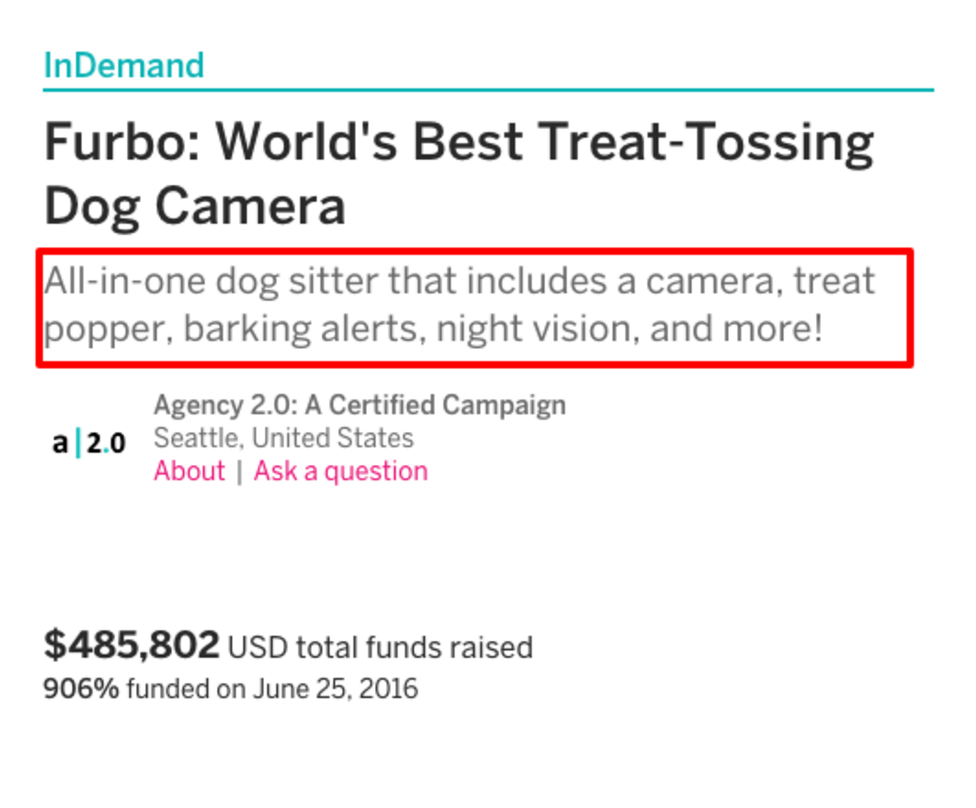
Search engine optimization (SEO) has been one of the hottest tech industry terms for over a decade. Today, having an SEO strategy is critical to managing a successful digital marketing campaign. As a crowdfunding campaigner, you already know the importance of growing a large audience of prospective backers to help give you feedback, share the buzz about your idea and help to back your goals.
Before you start crafting your message and writing copy for your campaign website, familiarize yourself with the basics of SEO. You don’t need to be a life-long back-end web developer to know how to use search engine keywords to improve your ranking on Google’s search engine results page (otherwise known as SERP – another cool-sounding techy acronym). You just need some basic understanding about how search engine rankings work from both a copy and a technical perspective in order to craft a message that Google and other search engines will rank at the top of their results page. Here’s how to start:
The Copy Side: Keywords
When it comes to writing the content of your campaign, the words you choose are essential to being found. A keyword, or a keyword phrase, is what a prospective backer may enter into a search engine browser when looking for a product that meets their need or solves their problem. For example, if you are working to crowdfund your idea of creating the world’s most intelligent and nimble drone, you want to bring people to your campaign website who are searching online for information on “drones,” or “GPS drones,” or “camera drones,” or “video drones.” People making these searches are the most likely to get excited about your ideas for revolutionizing the drone industry. They are more likely to share your story on social media, make an early contribution, provide feedback on early images and videos, and check back for launch updates. They are your tribe.
These strangers-soon-to-be-backers could very well live on the other side of the world and may never otherwise find you without the help of a search engine, but first, search engines have to find you. That’s where using the same keywords in your website copy that people enter into the Google or Bing search bar can help.
How do you determine the most relevant keywords for your campaign and incorporate them into your website copy?
- Brainstorm: Create a list of all of the terms associated with your project, and don’t forget adjectives or defining characteristics. Also consider variations of the same phrase. For example, if you have created a new Bluetooth earbud product, your keywords may include: earbuds, Bluetooth earbuds, wireless earbuds, Bluetooth wireless earbuds, wireless headphones, etc.
- Use keywords strategically in your campaign copy: Make sure that your campaign copy uses each of your keyword phrases at least once, but don’t be tempted to awkwardly cram phrases and words into your copy where they don’t fit. Google is smart and it can tell when you are trying to overuse keywords to improve your SEO, and as a result it will actually lower your ranking. Instead, focus on, relevance, uniqueness and value. If you have chosen the right words, they will naturally fit into your message.
- Your “tagline” should incentivise users to click: the tag line, which appears under your campaign title will appear in the search engine results as a “meta description” or snippet. This should have a clear “call to action” and incentivize the backer to want to click the result vs the other results on the page. A mix of “sales” talk and value you are offering helps your result stick out among the others.
How it appears on the campaign page:

How it will appear within Google’s search results:

- Your Campaign Title: Your campaign title also serves as the title that shows up as a search result, so attempting to include the type of product you are selling; or the demographic you are trying to reach is important. In the example above; the Dog Camera is the focus, which helps Google understand the page is a product page focused on a Camera.
Needs Help: “Help make things fast a reality with Printz!”
On Point: “Help make things fast with 3d Printing by Printz!”
- Unique images and Gifs: Be diligent to use images and gifs that are not shared, stock photography, or altered. Googlebot loves high-quality images that don’t exist anywhere else!
Get out there and get mentions!
- The importance of a linking strategy. Think of inbound links to your campaign from other online websites as votes of confidence from cyberspace. Search engines use the number of sites linking to you to analyze the popularity of your content. The more popular you are, the higher your search engine ranking will be. Remember again, that it’s about quality, not quantity. Google knows what are reputable sites and what are not. This is where public relations and media outreach and SEO converge. If, for example, Google sees that the reputable tech publication Gizmodo is linking to your campaign site from an article they published about your invention, it will help your rankings. We often find campaigns who have mentions from high-quality sites, blogs, news outlets, will also have a high number of visits from referral traffic; which converts at a very high percentage. The goal is high quality, not volume. Moz’s “how to” documents are a great resource to learn both the basics and advanced techniques.
SEO is both an art and a science. With a strong keyword strategy, high-quality content and a linking strategy that leverages industry thought leaders, your campaign can easily be found by a world of prospective supporters you may have never otherwise known!
Want to hit the ground running with your crowdfunding campaign? Download the Indiegogo Pre-launch Prep Kit.




This is quite helpful!
You wrote a very interesting article on a not so interesting, but extremely important topic, in a way that everyone can understand it.
Great read! Well done!
Moar!
Wohoo! Amazing!